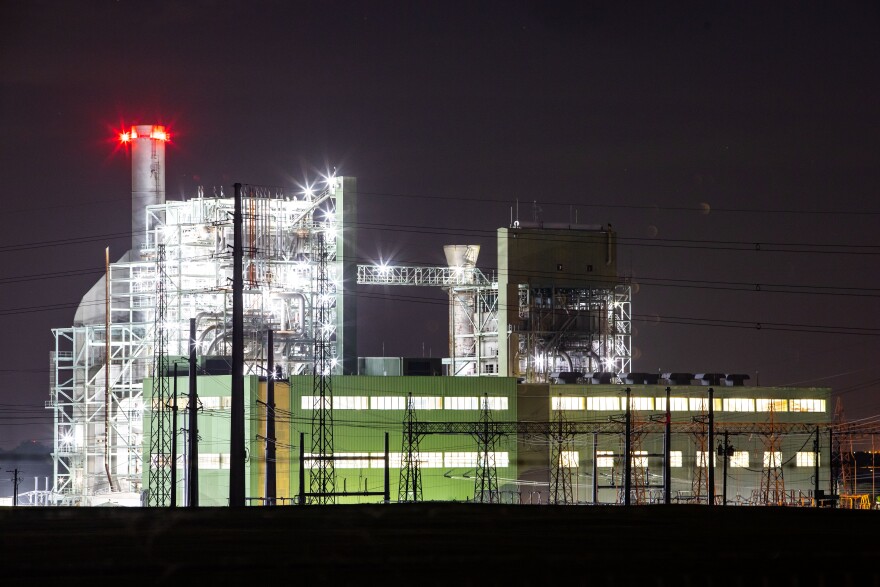If you're an Austin Energy customer, you're going to see an increase on your bill starting this month. It's about $15. It may be the first, but it won't be the last over the next couple months.
Austin's publicly owned utility is raising how much it costs to give you electricity by altering its rate structure for 2023. It's been a monthslong legal process that's involved a boatload of lawyers, consumer advocates and energy industry insiders — and a whole lot of handwringing.
Here's a guide to why, when and how much of a hike to expect.
How much is my bill going to increase?
At the bare minimum, your bill will go up $15 on average over the next three years when they will be revisited — so roughly $180 annually. That charge is to recover costs related to providing electricity. Basically, the utility has been undercharging customers, which is at the heart of this whole thing (more on that later).
In Austin Energy-speak, as noted on your bill, this charge is called a "power supply adjustment." In relative layman's terms it's what's known as a pass-through charge — the utility is passing on costs to pay off debt, keep plants up and running, and pay for fuel. This charge is locked in after a City Council vote in October.

Additional charges starting next year are still TBD.
Under the city's system, Austin Energy proposes an increase to its base rates and other charges, then those charges are reviewed by folks within the energy industry, as well as advocates for residential and industrial customers. Environmental groups like the Sierra Club are in the mix, too.
Once a proposal is finalized and approved by City Council, it goes into effect the following year.
In April, Austin Energy proposed raising base rates — the structure it charges for various tiers of energy usage — and its customer charge, a $10 flat fee.

Under the utility's proposal, the customer charge, would go from $10 to $25. So, combined with the pass-through charge, you could see an increase (on average) of roughly $360 a year to pay for electricity.
Up next: base rates, which are circled below.

As mentioned earlier, Austin Energy has been undercharging customers, particularly, those in the lowest tier of its five-tier structure — that is, those who use the least electricity. To make up for a multimillion-dollar gap in revenue, the utility has proposed raising rates for these customers. Folks in the lowest tiers could see increases of anywhere from 27% to 47% of what they're charged for electricity, according to an independent hearing examiner.
The hearing examiner is an attorney appointed by the City Council, along with an independent consumer advocate (ICA), a person who represents residential customers. Both the consumer advocate and Austin Energy have projections of how much the increases could impact customers — and different models for how the utility should increase base rates. The hearing examiner is essentially a mediator between these two sides.
Currently, Austin Energy has five tiers of rates. So, if you used 500 kilowatt hours (kWh) last month — about enough energy to power a small apartment — you'll get charged at that first rate. If you go over that cap of 500 kWh, you'll move into the second tier of energy pricing.
Most residents are around those two tiers.
Austin Energy wants to winnow its tiers down to three tiers, which it says will allow for more "equitable" bills between residential and industrial customers. Advocates say that will have a greater impact on low-usage and low-income customers.

You'll notice ICA's proposal is drastically lower. It has said Austin Energy has vastly overestimated its revenue gap, and the hearing examiner has essentially suggested council find a rate between the two options.
The hearing examiner has also expressed concerns about Austin Energy's proposal, saying in a filing that it would cause "rate shock" for customers.
The examiner said he was "not persuaded that [Austin Energy] has adequately addressed the affordability of the new rates for economically vulnerable customers."
Why is Austin Energy doing this?
Austin Energy is required to review its rates every few years. The city decided to push off a rate change in 2020 because of the pandemic.
Then, there's the $37 million gap in Austin Energy's revenue.
The utility argues the costs to provide energy far outweigh the revenue it's bringing in, that the revenue gap is unsustainable and that the utility risks a credit downgrade if it doesn't restructure its base rates and fee structure for residential customers.

There are a lot of reasons for that gap. We'll start with what Austin Energy calls the cost of service — that is simply how much money it loses to provide electricity
Cost of service
Austin Energy is essentially subsidizing electric service for folks who use less energy — which is 77% of its customer base.
A lot of people are moving to Austin. But those folks are using a relatively low amount of energy, and Austin Energy's paying more to supply it.
Austin Energy General Manager Jackie Sargent told the Austin City Council at a Nov. 1 work session the utility must raise costs for the lower-usage customers to make up for that gap.
"Customers are simply not using as much electricity, and that's a good thing," she said. "It also means that due to our current, tiered residential rate structure, 77% of these customers are not paying their fair share of ... costs."
The blackout, ERCOT and the pandemic
Even though half of its customers lost power at some point during the 2021 statewide blackout, Austin Energy actually made money by putting electricity on the grid.
But because of Texas' idiosyncratic energy market, the utility had to foot the bill for another electric company's bankruptcy in the wake of the historic blackout. Austin Energy estimates it had to shoulder $27 million in debt after the bankruptcy of the Brazos Electric Cooperative.
Before the blackout, the Austin City Council had also placed a moratorium on shutting off service for customers who couldn't pay. Austin Energy said that also significantly ate into its revenue.
Transfers to the city's budget
Austin Energy is publicly owned, and part of its budget gets transferred to the city to pay for emergency services, libraries and parks.
The transfer is one of the biggest revenue-drivers for the city's budget. Last year, revenue from the utility, along with Austin Water, accounted for roughly 15% of the city's budget for its general fund.
Austin City Council controls how much Austin Energy has to transfer.
Keeping up facilities and transmission lines
Austin Energy estimates it has 632 miles of transmission lines (think power lines) and nearly 160,000 utility poles.
It owns three power plants, including one it bought last year in Nacogdoches. The utility used to draw power from that plant on a contract, but it argued buying the power plant outright would be cheaper in the longterm, saving $275 million.
It also has a share in a nuclear plant and a coal-fired plant, the Fayette Power Plant. The utility included costs related to the plant, which the city has been pushing Austin Energy to shut down, in its base rates.
What if I can't afford this increase?
Austin Energy offers help to residential customers who are having a hard time paying their bills. Customers must be below 200% of the federal poverty level, however, which is equivalent to a $55,000 annual income for a household of four.
The Texas Department of Housing and Community Affairs also recently reopened its utility assistance program. Be warned: Last go-round the program closed its application window in just two weeks. You can learn more about that program here, or call 512-494-9400.
Can I challenge these proposed increases?
The utility's formal outreach wrapped up earlier this fall, but the Austin City Council has OK'd a couple more opportunities for public input.
A collective of environmental, energy industry and customer advocates put forth a counterproposal that would increase the customer charge $12 and not drastically raise electricity rates. Council will have a meeting this week to discuss the proposal.
Here's a rundown of the weeks ahead:
- Nov. 14 — The city's Electric Utility Commission will have a meeting at 6 p.m. at Austin Energy's headquarters. Public testimony is allowed.
- Nov. 15 — The Austin City Council will have a public hearing starting at 1 p.m. Public testimony is allowed.
- Nov. 29 — Austin City Council and the Austin Electric Utility Oversight Committee will have a joint work session starting at 9 a.m.
- Dec. 1 — Austin City Council will have public testimony at its 10 a.m. meeting. Council expects to vote on the base rates at this meeting.















